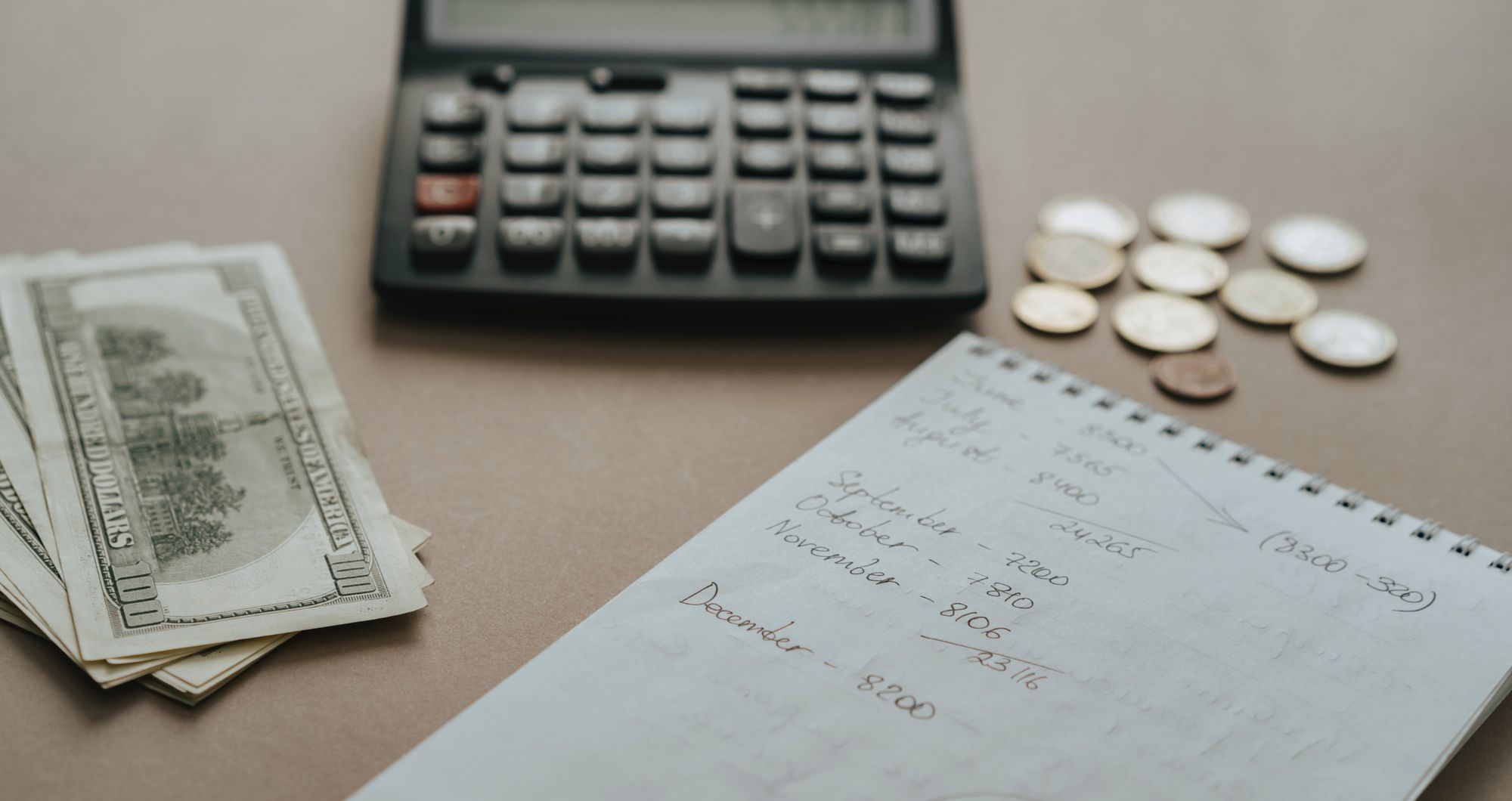The word ‘depreciation’ does not have a nice ring to it. After all, when it comes to financial dealings and wealth management, we all want everything to ‘appreciate.’ But everything starts making sense when you see the larger picture - tax depreciation.

Tax depreciation will, in fact, contribute to your asset appreciation.
Confused?
You won’t be by the end of this article! In this post, we will be taking a look at:
- What is Tax Depreciation?
- What Assets Can You Depreciate?
- How to Calculate Tax Depreciation?
- Straight-Line Depreciation
- Double-Declining Balance Depreciation
- Sum-of-the-Year’s-Digits Depreciation
- Units of Production Depreciation
- Modified Accelerated Cost Recovery System
- What is a Tax Depreciation Schedule?
- What’s New in Tax Depreciation for 2021?
What is Tax Depreciation
Tax depreciation allows businesses to deduct the total cost of expensive assets over time by writing them off in their taxes. That’s a lot to chew, we understand. So, to understand the concept of tax depreciation better, let us decompose it into two components: asset and depreciation.
An asset is anything having a dollar value. These could be tangible assets (printers, delivery trucks, or even stationery) or intangible assets (intellectual property, patent, copyrights). Both tangible and intangible assets require upfront investment and lose value over time, which brings us to the next part - depreciation.
As seen above, depreciation is the loss of value - but that’s too vague. To quantify the effect of depreciation in accounting, the cost of the asset is spread across the years as a factor of its revenue-generating capabilities.
Naturally, as an asset depreciates with time, it will have a bearing on its usefulness. Subsequently, it will impact your revenue by restricting it. And since you pay taxes on these earnings, you can write off such depreciation-related expenses to reduce your taxable income and corresponding tax liability. As a result, businesses can recover the cost that they have invested in such assets!
In other words, tax depreciation is compensation for the loss of value or usefulness of a tangible asset used for income generation.
What Assets Can You Depreciate?
In most cases, tax depreciation only applies to fixed, tangible assets. In the case of intangible assets, businesses can apply for amortization.
And while the definition of fixed assets eligible for tax depreciation varies from country to country depending on the local laws and tax jurisdictions, there exist certain commonalities that are universally true. These include:
- The taxpayer must own the asset
- The asset must be employed in income-generating activities of the business
- The asset must have a determinable useful life that can be reasonably estimated
- The asset must be long-term with a useful life exceeding a year
In the case of small businesses, the following class of assets is typically eligible for tax depreciation:
- Real estate
- Office furniture
- Equipment and computers
- Vehicles
Land is a grand exception to the laws surrounding depreciation. Why? Because it is believed to have an unlimited useful life.
Read up on the tax regulations to know more about the assets that are not covered under tax depreciation.
How to Calculate Tax Depreciation
There are several ways to calculate depreciation. However, some are more suited for bookkeeping while others are excellent for minimizing tax liability. As a result, small businesses may resort to one technique for bookkeeping and the other for filing tax returns. Alternatively, some small businesses may adopt a common technique for books and financial statements to make the process easier.
Regardless of what you choose, the following are the different ways in which you can calculate depreciation:
Straight-Line Depreciation
Straight-line depreciation is one of the commonest and simplest ways to calculate the depreciation of a fixed asset. It charts the journey of an asset value as a function of time in a downward sloping line, thereby splitting the value of the asset evenly over time.
To calculate straight-line depreciation, subtract the salvage value of the asset from the total cost and divide the difference over its useful life.
Accordingly, the tax depreciation works out to be:
Straight-Line Depreciation = (Asset Cost - Salvage Value) / Useful Life
Who Should Use It?
Small businesses that have a simple accounting system can adopt straight-line depreciation.
Illustration
You purchase a laptop worth USD 25,000. Its salvage value is USD 1,000 and it has a useful life of six years.
Straight-line depreciation = (Asset Cost - Salvage Value) / Useful Life
= (25000 - 1000) / 6
= USD 4,000
And so, you will write off USD 4,000 from the laptop’s value each year for a total of six years.
Double-Declining Balance Depreciation
The double-declining balance depreciation method is slightly more complicated than the straight-line depreciation technique. Through this method, you can write off greater asset value during the initial days of the asset’s useful life than later on. It does not account for the salvage value.
In the first year of double-declining balance depreciation, you write off double the amount as you would in straight-line depreciation. Thereafter, you will claim depreciation at the rate corresponding to the asset’s remaining book value, which is the cost minus the amount already written off.
Accordingly, the tax depreciation works out to be:
Double-Declining Balance Depreciation = (2 * Straight-Line Depreciation Rate) * Book Value at the Beginning of the Year
Who Should Use It?
Businesses that wish to recover higher upfront value for their assets.
Illustration
Consider buying a printer worth USD 10,000 that has a useful life of 10 years.
Since the useful life is 10 years, the straight-line depreciation rate would be 10%. And so, for the first year, the double-declining balance depreciation would be:
Double-Declining Balance Depreciation = (2 * Straight-Line Depreciation Rate) * Book Value at the Beginning of the Year
= (2 * 0.10) * 10000
= USD 2,000
You will write USD 2,000 off the printer’s value for the first year. As such, the book value would be USD 8,000. Now, for the second year, the double-declining balance depreciation would be:
= (2 * 0.10) * 8000
= USD 1,600
As you may have noticed, the tax depreciation value decreases per year with a final write-off corresponding to USD 268.
Sum-of-the-Year’s-Digits Depreciation
Sum-of-the-Year’s-Digits (or SYD) depreciation is another way to recover the asset’s total cost in the early years of asset ownership. To calculate SYD tax depreciation, you need to total the digits corresponding to an asset’s useful life to discover a fraction that applies to each year of depreciation. Then multiply this value with the difference between asset cost and salvage value to get the tax write-off for each year.
Accordingly, the tax depreciation works out to be:
SYD Depreciation = (Remaining Lifespan / SYD) * (Asset Cost - Salvage Value)
Who Should Use It?
Businesses that wish to recover higher upfront value for their assets while factoring in the salvage value.
Illustration
Let’s fall back on the laptop’s example. It cost USD 25,000, has a salvage value of USD 1,000, and useful life of six years. The corresponding sum of useful value digits would be 6 + 5 + 4 + 3 + 2 + 1 = 21.
For the first year, the SYD would look like this:
SYD Depreciation = (Remaining Lifespan / SYD) * (Asset Cost - Salvage Value)
= (6 / 21) * (25000 - 1000)
= USD 6857
In the subsequent year, since the lifespan is reduced by a year, the SYD would be:
= (5 / 21) * (25000 - 1000)
= USD 5714
Much like double-declining balance depreciation, the write-off using SYD will reduce year on year until it closes at USD 1,143.
Units of Production Depreciation
The Units of Production Depreciation method calculates the depreciation on equipment keeping in view the amount of work it does. The amount of work can be quantified in terms of the operational hours or the number of items produced. As such, they can write off a greater amount for years when they use the product more versus when they use it less.
It deducts the salvage value from the asset cost and spreads it over the units produced in its useful life. In this manner, businesses can calculate the dollar value in depreciation per unit. For every year, the sum of the total units produced in the same year gives the write-off amount.
Accordingly, the tax depreciation works out to be:
Units of Production Depreciation = (Asset Cost - Salvage Value) / Units Produced in Useful Life
Who Should Use It?
Small businesses that write off equipment that has a quantifiable and widely accepted output during its useful life. However, since it involves the constant monitoring of the equipment, the technique must be reserved for calculating the tax depreciation of high-value machinery.
Illustration
Since the number of hours counts as the unit of production, let us continue using the example of the laptop. It cost USD 25,000, has a salvageable value of USD 1,000. Let us assume that the manufacturer has declared that the laptop can be used for a total of 120,000 hours.
As such, the depreciation cost per hour would be:
Units of Production Depreciation = (Asset Cost - Salvage Value) / Units Produced in Useful Life
= (25,000 - 1,000) / 120,000
= USD 0.2 depreciation per hour.
In the first year, the laptop is used for a total of 10,000 hours. And so, the write-off for the first year would be:
10,000 * 0.2 = USD 2,000
Calculate this value per year depending on the asset’s usage. Do remember that you can write off a total of USD 24,000 or 120,000 hours.
Modified Accelerated Cost Recovery System
The Modified Accelerated Cost Recovery System, or MACRS table, is the depreciation method widely accepted for tax returns. Under this system, assets are assigned to a particular asset class, which dictates its useful life.
Who Should Use It?
Any rental property owner or business that claims tax depreciation on US federal income tax.
Illustration
The IRS Publication 946, Appendix A deals in tax depreciation under MACRS using three different tables governing useful life ranging from 3 years to 39 years depending on the asset class. Consult your accountant or let tax software handle this complication.
What is a Tax Depreciation Schedule?
A depreciation schedule is a tabular view of the depreciation of each asset over time. It helps businesses assess the current value of the asset at any point in time. Typically, a depreciation schedule will contain the following details:
- Name and a brief description of the asset
- Date of purchase and the corresponding cost
- Expected useful life
- Depreciation method use
- Depreciable value
- Recalculation point, if any
- Salvage value or end value
What’s New in Tax Depreciation for 2021?
For the year 2021, the following changes in tax depreciation have been announced by the IRS:
- The maximum Section 179 expense deduction is USD 1,050,000. This limit is reduced by the amount by which the cost of Section 179 property placed in service during 2021 exceeds USD 2,620,000
- The increased Section 179 deduction extended to enterprise zone property, which was introduced in 2020, has been revoked
- The maximum Section 179 expense dedication for SUVs is USD 26,200 in 2021
- The extended recovery period of three years for racehorses two years or younger will no longer apply to horses placed in service after 31st December 2021
- The accelerated depreciation for qualified Indian reservation properties will no longer apply to properties placed in service after 31st December 2021
Businesses filing income tax in the US can claim depreciation by filing IRS Form 4562.
How can Deskera Help You?
Deskera Books is an online accounting, invoicing, and inventory management software that is designed to make your life easy. A one-stop solution, it caters to all your business needs from creating invoices, tracking expenses to viewing all your financial documents whenever you need them.
Through Deskera Books, your accounting would be handled by it, with all that you would need to do is update your invoices, your account receivables, and accounts payable, and the operating expenses incurred as well as operating income earned on the software. In fact, you can even delete or edit the existing debit notes and credit notes, as is applicable.
The platform works exceptionally well for small businesses that need to figure out a lot of things when they are setting out. This delightful software allows them to keep up with the client’s expectations by assisting them in overseeing a timely delivery.
With the well-thought and well-designed templates, you can now anticipate your work to become simpler. These templates can be used for transactions like invoices, quotations, orders, bills, and payment receipts.
If yours is a drop shipping business, you can easily track your orders and create new dropship orders for your suppliers based on the customer orders.
Deskera People is another platform that enables you to expedite and simplify the processes. Through its automated processes like hiring, payroll, leave, attendance, expenses, and more, you can now unburden yourself and focus on the major business activities. It also assists with driving growth for your business by integrated Accounting, CRM & HR Software.
The entire setting up process on Deskera Books is super easy, with you having to only sign-up using your email address or social authentication, and half of your work would be done. Once you have registered on Deskera Books, you would get pre-configured accounting rules, invoice templates, tax codes, and a chart of accounts, to mention a few vital features. Lastly, your accountants can be added to your Deskera Books account for free by just inviting them to use the system.
With so many features at your disposal, making your accounting, reporting, and compliance easier, what are you waiting for?
Conclusion
Tax depreciation can be an excellent tool for small businesses to reduce their tax liability. We have discussed an array of depreciation techniques that may suit different business models. Some of these may be more suitable for tax depreciation, while others find greater use in book depreciation. Identify what works for you and maintain clear records for the different types of depreciation.
Key Takeaway
Let us quickly review everything discussed so far:
- Tax depreciation allows businesses to recover capital expenditure on select fixed assets by writing off the tax liability proportionately
- Businesses can depreciate assets that they own, that are employed by the business for income generation, and that have a reasonably estimable useful life greater than one year
- Tax depreciation can be calculated using various methods, namely, straight-line depreciation, double-declining balance depreciation, sum-of-the-year’s-digits depreciation, units of production depreciation, and modified accelerated cost recovery system
- Each of these tax depreciation models comes bearing its respective pros and cons.
- The methodology used for bookkeeping may be different from the depreciation value filed in tax returns
- Businesses can monitor asset depreciation using a tax depreciation schedule.
- The IRS has announced modifications to tax depreciation for 2021 by revising certain ceilings
Check out Deskera Books for a wide range of bookkeeping activities - from invoicing to calculating income tax liability. Contact our experts to know more.
Related Articles













